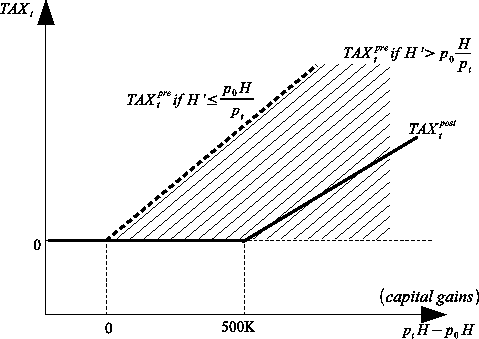How Investing Taxes Work (Part 1 Capital Gains)
Post on: 25 Июнь, 2015 No Comment

W ith tax season right around the corner, I figure this is a good time to start posting some tax related articles. Are you curious about how investing taxes are calculated? Specifically, capital gains tax? If so, you have come to right blog! I am by no means a tax expert but I do have enough knowledge to give general guidelines on how you can figure out your own investment taxation. Note that these tax guidelines described in this post are for Canada only. On top of that, you should consult a tax professional before applying anything you read on my blog and the web in general. )
Lets start with RRSPs. As you probably know, RRSP contributions and investment growth are taxable only upon withdrawal. At that point, the withdrawals are taxed as income at your marginal tax rate at the time . Thats the strategy behind RRSPs: contribute, let it grow tax free, and withdraw when you are in a lower tax bracket (hopefully).
Now on to Non-registered accounts. There are 3 types of taxes that you need to consider.
- Capital Gains tax (preferred)
- Dividend Tax (preferred)
- Interest tax (keep in RRSP)
Capital Gains (CG) Tax
When you profit from selling a stock in a non-registered account, you will be subject to capital gains (CG) tax. What are capital gains? Capital gain is the difference between the selling price and buying price of a stock less the commission. For example, if you sold a stock for $1000 (inc selling fee) and paid $800 (inc buying fee), you would have a capital gains of $200. Capital gains tax are subject to a 50% inclusion rate. This means that 50% of your profit will be included as income. So in our above example, $100 would be added to your income and taxed at your marginal rate . Or another way to look at it is that any profits from a stock sale in a non-reg account are taxed at HALF your marginal rate.
The 50% inclusion rate is a reason why most financial gurus suggest that you keep investments for the purposes of capital appreciation/gain outside of your RRSP. If you keep your capital appreciation/gain assts inside an RRSP, you will be taxed on 100% of the gain because all income withdrawn from an RRSP is taxed at your marginal rate.
Another advantage of keeping your capital appreciating stocks outside of an RRSP is because you can claim your losses against your gains to reduce your taxes payable. Whereas within an RRSP, losses cannot be claimed. For example, if in 2006 you sold stock for a $4000 non-reg portfolio profit and $1000 in losses, your total profit is now $3000. To figure out your taxes payable, it would be: $3000 x 0.50 = $1500. This $1500 would be added to your taxable income for that year and taxed at your marginal rate.
This is why youll read some tax strategies to sell your losing stocks at the end of the year. The losing amount will be deducted from your total winning amount and reduce your overall taxes. What if you have a loser for the year, but you believe its a long term winner? Youre probably thinking to sell it before the end of the year and purchase it again. Not so fast, you have to make sure you dont violate the superficial loss rule .
What is the superficial loss rule?
www.cabusinessadvisor.com/Tax/TaxTraps/SuperFL.htm
This rule applies where a person or affiliated person acquires or had the right to acquire the same or identical property within 30 days after the disposition or 30 days before the disposition of the property in question. The disposition could have been made to anyone. In these cases, the loss on the disposition is denied and the amount of the loss is added to the cost of the substituted property.
In laymans terms, it simply means that if you sell a stock at a loss, you cant repurchase the shares back again within 30 days and claim the loss against your gains. However, if you do repurchase the same shares back within 30 days and you profit from it in the future, you can deduct the initial loss against your gain of THAT stock.
For example:
- Purchase 10 ABC stock for a total cost of $1000
- Sell 10 ABC stock for: $800
- Loss: $200
- Repurchase 10 ABC stock within 30 days for: $850
- Sell 10 ABC stock in the future for $1200:
- Profit: $1200-$850-200 (initial loss) = $150
- Taxable Amount: $75 ($150 *50%)
As a side note, you should consider the superficial loss rule if you are attempting the Smith Manoeuvre (SM). The SM suggests to sell your non-reg stock to pay down your house, then REPURCHASE the stocks. If you sell stock at a loss. you should wait 30 days before repurchasing. Otherwise, the loss will be omitted.
In summary:
- Capital gains are taxed at 50% of your marginal rate (efficient).
- Keep your capital appreciating stocks/mutual funds outside of your RRSP.
- If you trade often, sell your losers at the end of the year to reduce your profits for the year.
- Take heed of the superficial loss rule.
Taxes can be boring but they are an essential component to financial planning. In the next article (Part 2) . well discuss the other 2 types of investment taxes, dividend and interest income tax.
If you have anything to add to this article, please post them in the comments.














